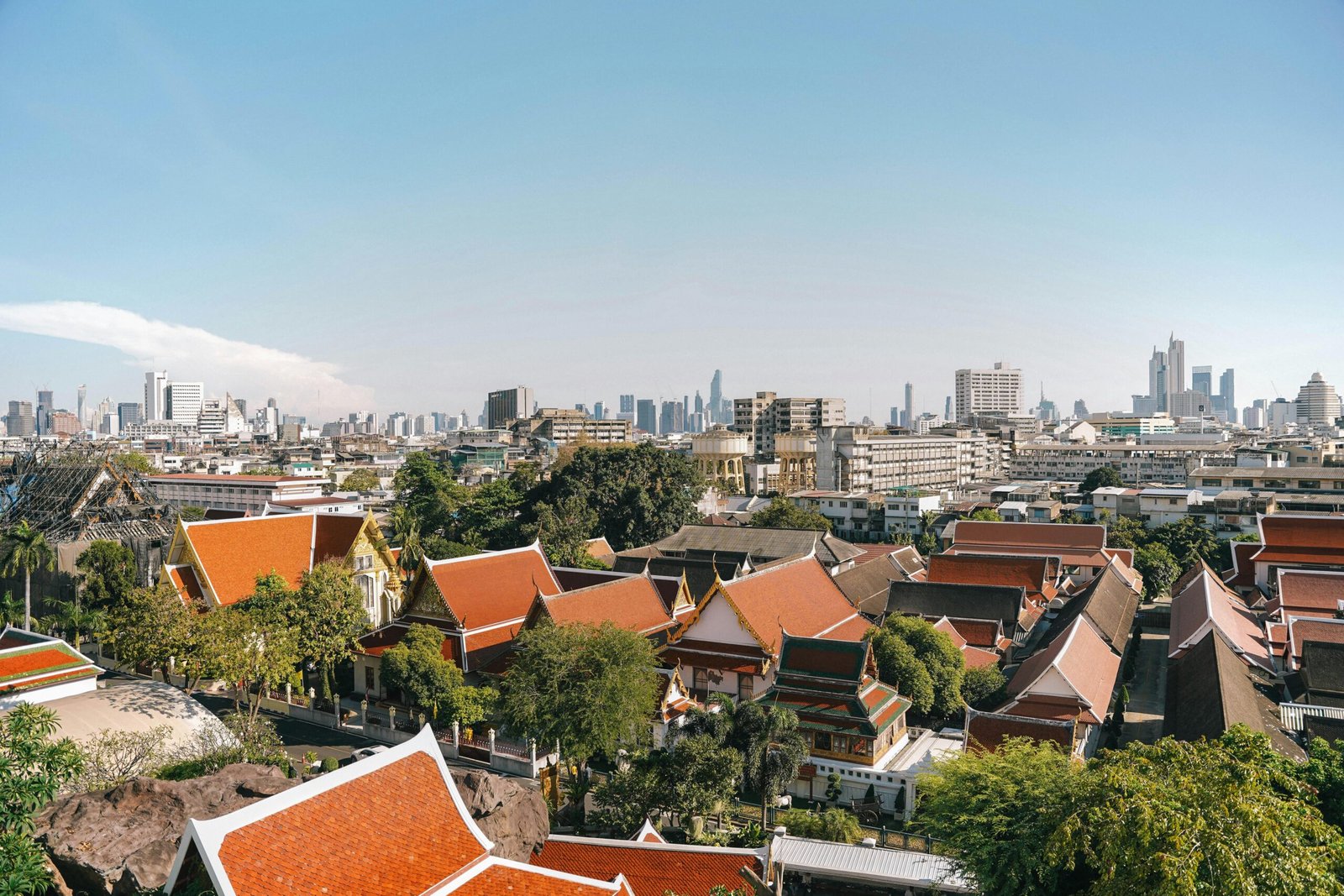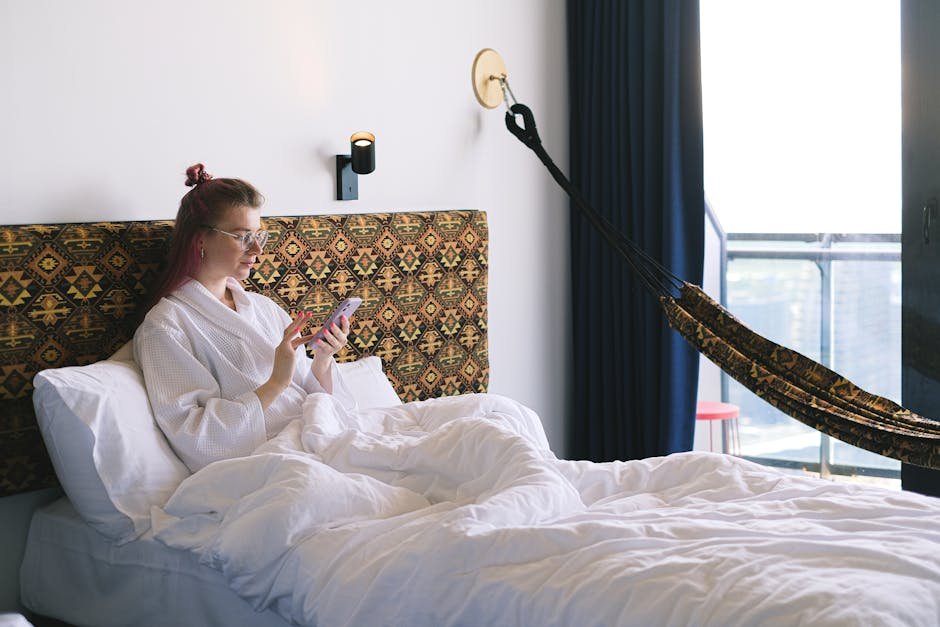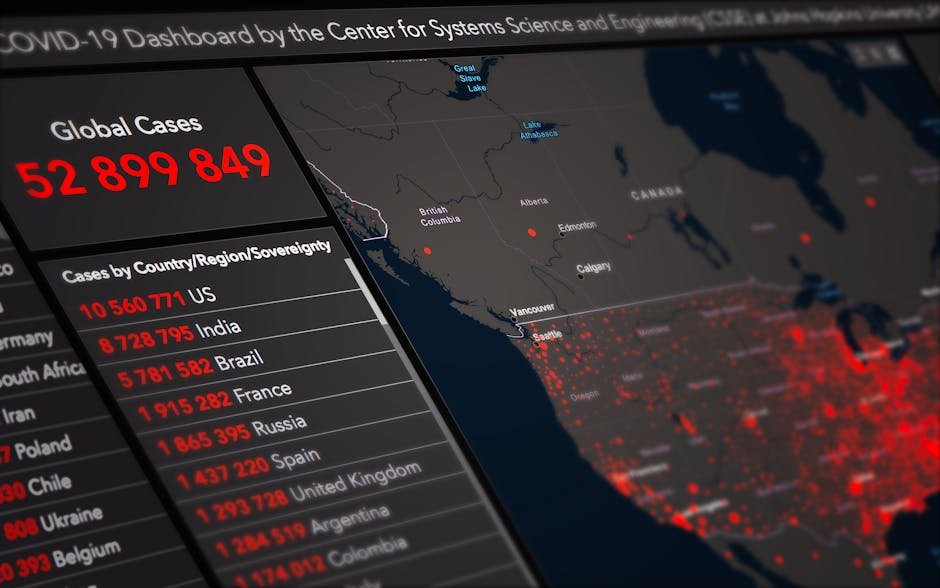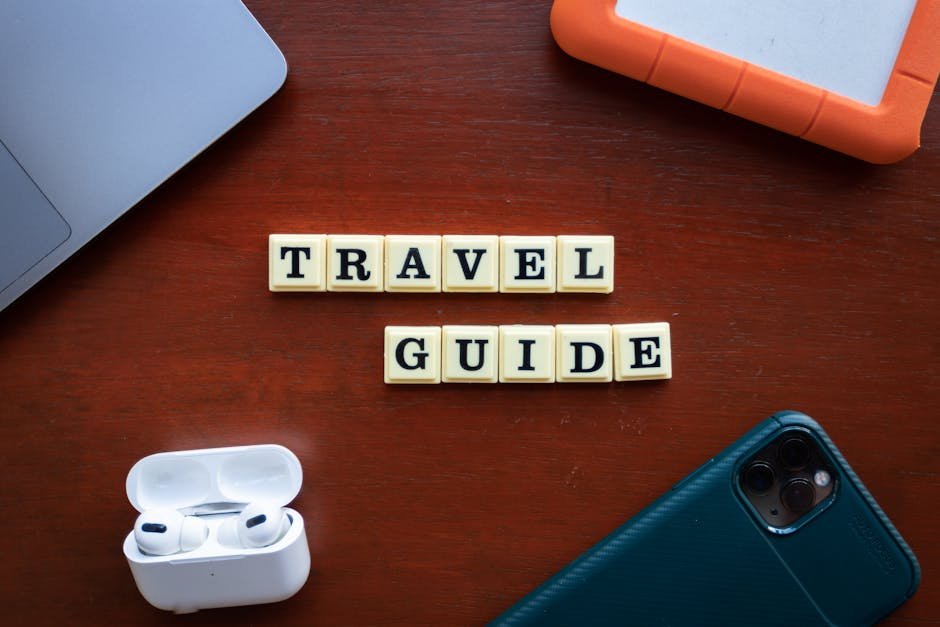If you’re dreaming of living in Thailand without breaking the bank—think tropical vibes, delicious street food, and vibrant culture—this guide is for you. Thailand is one of Southeast Asia’s most affordable destinations, especially for those on the Destination Thailand Visa (DTV) or other long-term visas. Whether you’re craving a quiet northern town or a coastal gem, I’ll walk you through the cheapest places to live in Thailand in 2025, covering costs, lifestyle, and why each spot shines. Let’s dive into Thailand’s budget-friendly hotspots!
Why Live in Thailand on a Budget?
Thailand’s low cost of living, warm climate, and welcoming locals make it a top choice for expats, retirees, and digital nomads. In 2025, places like Chiang Mai and Udon Thani offer monthly budgets as low as $500–$1,000 USD, covering rent, food, and transport. The DTV, requiring 500,000 THB (~$13,665 USD) in a bank account, pairs perfectly with these affordable locations, letting you stretch your savings while enjoying Thailand’s charm. From bustling cities to serene countryside, there’s a cheap spot for every lifestyle.
Benefits of Choosing Cheap Places in Thailand
- Low Costs: Rent starts at 3,000 THB ($80 USD/month); street food is 30–60 THB ($1–$2/meal).
- Visa Flexibility: DTV and other visas (e.g., Retirement O-A) support long-term stays in budget areas.
- Community: Expat and digital nomad hubs in places like Chiang Mai and Pai.
- Accessibility: Cheap domestic flights (500–2,000 THB) and buses (100–500 THB) connect remote areas.
- Culture and Nature: Affordable access to temples, markets, and beaches.
Top 7 Cheapest Places to Live in Thailand
Based on 2025 cost-of-living data, expat reviews, and web sources, here are the cheapest places to live in Thailand, with monthly budgets, housing costs, and lifestyle highlights. Costs assume a modest lifestyle (local food, basic rentals, public transport).
1. Chiang Mai (Northern Thailand)
Overview: Chiang Mai, a digital nomad haven, blends urban amenities with northern charm. Surrounded by mountains and temples, it’s perfect for budget-conscious expats.
Monthly Budget: $500–$900 USD
- Rent: 3,000–8,000 THB ($80–$220) for a studio or one-bedroom apartment.
- Food: 30–60 THB ($1–$2) per street food meal; 3,000–5,000 THB ($80–$135) monthly grocery budget.
- Transport: 20–50 THB ($0.50–$1.50) for red songthaew (shared taxis); 1,000 THB ($27) for motorbike rental.
- Utilities/Wi-Fi: 1,000–2,000 THB ($27–$55) for electricity, water, and internet (30–50 Mbps).
Lifestyle Highlights:
- Vibrant expat scene with coworking spaces (e.g., Punspace, ~2,000 THB/month).
- Night markets (Chang Phueak, Sunday Walking Street) for cheap food and crafts.
- Temples like Wat Phra That Doi Suthep and affordable yoga retreats.
- Cooler climate (20–30°C) compared to Bangkok.
Why Choose It: Low costs, strong nomad community, and cultural richness make it ideal for DTV holders. English is widely spoken in expat areas like Nimmanhaemin.
Where to Stay: Old City for culture; Nimmanhaemin for modern vibes; Hang Dong for quieter suburbs.
2. Udon Thani (Northeast/Isaan)
Overview: Udon Thani, in Thailand’s Isaan region, is a hidden gem with ultra-low costs and a laid-back vibe. It’s less touristy but has modern amenities and a growing expat community.
Monthly Budget: $450–$800 USD
- Rent: 2,500–6,000 THB ($70–$160) for a one-bedroom or small house.
- Food: 20–50 THB ($0.60–$1.50) for Isaan dishes like som tam; 2,500–4,000 THB ($70–$110) monthly.
- Transport: 10–30 THB for tuk-tuks; 800 THB ($22) for motorbike rental.
- Utilities/Wi-Fi: 800–1,500 THB ($22–$40) for basics.
Lifestyle Highlights:
- Authentic Isaan culture with spicy cuisine (laab, grilled chicken).
- UD Town night market for street food and shopping.
- Nearby Nong Prajak Park for walks and local events.
- Proximity to Laos (Vientiane, 1-hour drive) for visa runs.
Why Choose It: Dirt-cheap living and authentic Thai life, ideal for retirees or nomads seeking off-the-beaten-path experiences. Limited English outside expat circles.
Where to Stay: Near UD Town for convenience; outskirts for cheaper houses.
3. Chiang Rai (Northern Thailand)
Overview: Chiang Rai, quieter than Chiang Mai, offers stunning temples (e.g., White Temple) and rural charm at rock-bottom prices.
Monthly Budget: $450–$800 USD
- Rent: 3,000–7,000 THB ($80–$190) for a studio or house.
- Food: 25–50 THB ($0.70–$1.50) per meal; 2,500–4,000 THB ($70–$110) monthly.
- Transport: 20–40 THB for songthaews; 1,000 THB ($27) for motorbike rental.
- Utilities/Wi-Fi: 800–1,500 THB ($22–$40).
Lifestyle Highlights:
- Iconic Wat Rong Khun (White Temple) and Blue Temple.
- Night Bazaar for cheap eats and crafts.
- Close to the Golden Triangle (Thailand-Laos-Myanmar border).
- Peaceful, small-town vibe with cooler winters (15–25°C).
Why Choose It: Cheaper than Chiang Mai with similar northern charm, perfect for nature lovers and budget retirees. Smaller expat community but growing.
Where to Stay: City center near Clock Tower; Mae Sai for rural living.
4. Nakhon Ratchasima (Korat, Northeast/Isaan)
Overview: Known as Korat, this Isaan city combines urban facilities with rural affordability, ideal for those wanting a mix of modern and traditional.
Monthly Budget: $500–$850 USD
- Rent: 3,000–7,000 THB ($80–$190) for a one-bedroom or house.
- Food: 25–60 THB ($0.70–$1.50) for local meals; 3,000–5,000 THB ($80–$135) monthly.
- Transport: 10–30 THB for tuk-tuks; 1,000 THB ($27) for motorbike rental.
- Utilities/Wi-Fi: 1,000–2,000 THB ($27–$55).
Lifestyle Highlights:
- Thao Suranari Monument and night markets for local culture.
- Nearby Khao Yai National Park for weekend hikes.
- Modern malls (e.g., The Mall Korat) alongside traditional markets.
- Growing expat community, especially retirees.
Why Choose It: Affordable with city conveniences, great for those exploring Isaan’s culture without Chiang Mai’s crowds. Limited English in rural areas.
Where to Stay: City center near The Mall; outskirts for cheaper homes.
5. Hua Hin (Central Thailand)
Overview: A coastal town 3 hours from Bangkok, Hua Hin offers beachside living at lower costs than Phuket, with a sizable expat community.
Monthly Budget: $600–$1,000 USD
- Rent: 5,000–10,000 THB ($135–$270) for a one-bedroom or condo.
- Food: 40–80 THB ($1–$2) for street food; 4,000–6,000 THB ($110–$160) monthly.
- Transport: 20–50 THB for tuk-tuks; 1,200 THB ($33) for motorbike rental.
- Utilities/Wi-Fi: 1,200–2,500 THB ($33–$70).
Lifestyle Highlights:
- Hua Hin Beach and night market for seafood and crafts.
- Golf courses and resorts at budget-friendly prices.
- Cicada Market for art and live music.
- Retiree-friendly with international hospitals (e.g., Bangkok Hospital Hua Hin).
Why Choose It: Affordable coastal living with expat amenities, ideal for retirees or DTV holders wanting a beach vibe. More English spoken than in Isaan.
Where to Stay: Khao Takiab for budget condos; city center for markets.
6. Khon Kaen (Northeast/Isaan)
Overview: Another Isaan gem, Khon Kaen is a university city with modern vibes, low costs, and a friendly local scene.
Monthly Budget: $450–$800 USD
- Rent: 2,500–6,000 THB ($70–$160) for a one-bedroom or house.
- Food: 20–50 THB ($0.60–$1.50) for local dishes; 2,500–4,000 THB ($70–$110) monthly.
- Transport: 10–30 THB for tuk-tuks; 800 THB ($22) for motorbike rental.
- Utilities/Wi-Fi: 800–1,500 THB ($22–$40).
Lifestyle Highlights:
- Bueng Kaen Nakhon Lake for jogging and street food.
- Central Plaza Khon Kaen for shopping and dining.
- Vibrant student culture with cheap cafes and bars.
- Easy access to Laos for visa runs.
Why Choose It: Ultra-cheap with a youthful energy, great for nomads or retirees seeking a lively yet affordable city. Limited expat community.
Where to Stay: Near Central Plaza for convenience; outskirts for rural charm.
7. Pai (Northern Thailand)
Overview: A bohemian mountain town near Chiang Mai, Pai is a haven for backpackers and nomads seeking nature and low costs.
Monthly Budget: $500–$850 USD
- Rent: 3,000–8,000 THB ($80–$220) for a guesthouse or bungalow.
- Food: 30–60 THB ($1–$2) for street food; 3,000–5,000 THB ($80–$135) monthly.
- Transport: 1,000 THB ($27) for motorbike rental; walking in town.
- Utilities/Wi-Fi: 1,000–2,000 THB ($27–$55).
Lifestyle Highlights:
- Pai Walking Street for cheap eats and crafts.
- Hot springs, waterfalls, and Pai Canyon for outdoor adventures.
- Hippie vibe with yoga studios and vegan cafes.
- Cool winters (15–25°C), misty mornings.
Why Choose It: Dirt-cheap with a chill, artistic community, perfect for DTV nomads wanting nature. Smaller expat scene, less English spoken.
Where to Stay: Near Walking Street for nightlife; riverside for quiet bungalows.
Comparison of Cheap Places to Live
| Location | Monthly Budget (USD) | Rent (THB) | Key Features | Best For |
|---|---|---|---|---|
| Chiang Mai | $500–$900 | 3,000–8,000 | Digital nomad hub, cultural richness | Nomads, expats |
| Udon Thani | $450–$800 | 2,500–6,000 | Authentic Isaan, ultra-cheap | Retirees, off-grid nomads |
| Chiang Rai | $450–$800 | 3,000–7,000 | Quiet, temples, nature | Nature lovers, retirees |
| Nakhon Ratchasima | $500–$850 | 3,000–7,000 | Urban-rural mix, Isaan culture | Budget expats, adventurers |
| Hua Hin | $600–$1,000 | 5,000–10,000 | Affordable beach, expat amenities | Retirees, beach lovers |
| Khon Kaen | $450–$800 | 2,500–6,000 | Youthful, modern Isaan | Nomads, budget travelers |
| Pai | $500–$850 | 3,000–8,000 | Bohemian, nature-focused | Hippie nomads, nature lovers |
Analysis of Pros and Cons
- Chiang Mai: Nomad-friendly but pricier than Isaan; crowded in high season (Nov–Feb).
- Udon Thani: Dirt-cheap but fewer expats, limited English.
- Chiang Rai: Quiet and affordable but less infrastructure than Chiang Mai.
- Nakhon Ratchasima: Balanced but not a tourist hub, fewer Western amenities.
- Hua Hin: Coastal charm but slightly costlier; great for retirees.
- Khon Kaen: Lively and cheap but small expat scene.
- Pai: Scenic and artsy but remote, with slower Wi-Fi (20–30 Mbps).
Financial and Cost Analysis
- Rent: 2,500–10,000 THB ($70–$270/month) for basic studios or houses; cheapest in Isaan (Udon Thani, Khon Kaen).
- Food: 20–80 THB ($0.60–$2/meal) at street stalls; 2,500–6,000 THB ($70–$160) monthly for local dining.
- Transport: 10–50 THB ($0.30–$1.50) for local rides; 800–1,200 THB ($22–$33) for monthly motorbike rental.
- Utilities/Wi-Fi: 800–2,500 THB ($22–$70) for electricity, water, and internet.
- Miscellaneous: 1,000–3,000 THB ($27–$80) for entertainment (e.g., temple visits, markets).
- Visa Costs: DTV application (~$270); extensions (~$50). Funds (500,000 THB) can be held in a Thai bank account (e.g., Bangkok Bank).
Total Monthly Cost: $450–$1,000 USD, depending on location and lifestyle. Isaan cities (Udon Thani, Khon Kaen) are cheapest; Hua Hin is priciest but still affordable.
Tips for Living Cheaply in Thailand
- Eat Local: Stick to street food and markets (e.g., 30 THB for pad Thai) to save vs. Western restaurants (100–300 THB).
- Rent Long-Term: Negotiate 6–12-month leases for lower rates (e.g., 3,000 THB vs. 5,000 THB monthly).
- Use Motorbikes: Rent a scooter (800–1,200 THB/month) instead of taxis or Grab (~50–100 THB/ride).
- Choose Isaan: Udon Thani or Khon Kaen offer the lowest costs but authentic experiences.
- Join Expat Groups: Facebook groups like “Chiang Mai Expats” or “Hua Hin Expats” share budget tips.
- Bank Smart: Open a Thai account (e.g., Bangkok Bank, ~1,000 THB deposit) to avoid foreign ATM fees (220 THB/transaction).
DTV Tip: Use your 500,000 THB visa funds in a Thai savings account to earn 1–2% interest, offsetting living costs. Check with Bangkok Bank, which supports DTV holders.
Internal Link: For more on settling in Thailand, check out our guide on Opening a Bank Account in Thailand.
Detailed Analysis
Thailand’s affordability in 2025 stems from its low labor costs, abundant street food, and cheap housing outside tourist hubs like Phuket or Koh Samui (where budgets hit $1,500+/month). Isaan cities lead for savings due to lower tourism and rural economies, while Chiang Mai balances cost with nomad-friendly amenities (e.g., 50 Mbps Wi-Fi, coworking spaces). Hua Hin and Pai cater to beach and nature lovers but require slightly higher budgets. Challenges include:
- Language Barriers: Less English in Isaan or rural areas; use translation apps or learn basic Thai.
- Visa Compliance: DTV requires 500,000 THB in a bank account; ensure funds are accessible for extensions.
- Seasonal Costs: High season (Nov–Feb) raises rent in Chiang Mai and Pai; book early.
Posts on X highlight Chiang Mai’s popularity for nomads due to its $500–$700 budgets, while retirees praise Hua Hin’s healthcare and expat vibe. Isaan’s low profile keeps costs down but limits Western amenities.
Official Link
For visa details (e.g., DTV) and tourism info to explore these budget destinations, visit the Tourism Authority of Thailand: www.tourismthailand.org. This official site offers guides to regions, festivals, and travel tips.
Conclusion
The cheapest places to live in Thailand in 2025—Chiang Mai, Udon Thani, Chiang Rai, Nakhon Ratchasima, Hua Hin, Khon Kaen, and Pai—offer incredible value for budgets as low as $450–$1,000 USD/month. Whether you’re a DTV nomad in Chiang Mai’s coworking spaces, a retiree in Hua Hin’s beachside condos, or an adventurer in Isaan’s authentic towns, Thailand has a spot for you. With affordable rent, delicious street food, and vibrant communities, these destinations let you live richly on a shoestring. Pack your bags, open a Thai bank account, and start your budget-friendly Thai adventure today!







